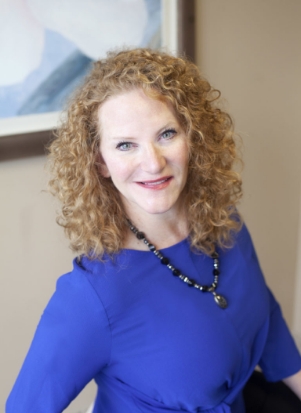Quick Links
What is a Brow Lift?
As we age, our eyebrows can become saggy or furrowed, making us look angry or tired, even if we are not. A brow lift, also called a forehead lift, can help to smooth wrinkles and lines on the forehead and between the eyes, as well as raise sagging brows for a more refreshed appearance.

Heather Rocheford, MD
BOARD CERTIFIED PLASTIC SURGEON
There are so many fads and false promises out there. It’s almost impossible to make a confident decision without trusted advice, and that’s what I’m here for. My goal is to help you understand what is right for you – based on your unique situation.
Meet Dr. RochefordDetails Of Brow Lift Surgery:
- Surgery: Surgery is done under sedation or general anesthetic, takes 2 – 3 hours, and is an outpatient surgery.
- Discomfort: Mild. Anticipate 0 – 3 days of pain medication. Many take only Tylenol.
- Bruising and Swelling: 10 – 14 days. Minimize swelling with constant head elevation and frequent application of ice. You may have black eyes for a short time.
- Bandages: Removed in 1 – 3 days.
- Stitches: Removed in 7 – 10 days.
- Make-up: May be worn in 3 – 5 days.
- Work: You may feel capable of returning within 3 days, but your appearance may be the limiting factor.
- Presentation in Public: You should be presentable within 1 – 2 weeks with the help of make-up.
- Exercise: May be resumed in 2 weeks.
- Final Result: Seen in 2 – 4 weeks. The duration of the result is 10 years – permanent.
Who is a Good Candidate for a Brow Lift?
Patients who are bothered by signs of aging in the brow region may be able to benefit from a brow lift. Good candidates include those who are in good physical shape, who do not smoke, and who have a realistic outlook on their procedure.
The Brow Lift Procedure
Brow lift surgery is an outpatient procedure and commonly takes between two to three hours to complete. A brow lift can be done through multiple small incisions with the aid of an endoscope or through a larger incision. An endoscopic procedure requires a long, thin tube with a camera attached to see the internal workings of your forehead beneath the wrinkles. A long incision, also known as an open brow lift, requires one long incision as opposed to several small incisions. Depending on your case, an open brow lift will require the removal of excess fat and skin. Your muscles will be loosened and your skin will be stretched for a smooth finish. Both approaches result in the natural elevation of the brows and correction of visible creases in the forehead. One approach may be more beneficial than another depending on your anatomy. The incisions for an endoscopic procedure will be hidden in your hairline, so as you recover, your scarring will not be seen. The open brow lift will leave scars hidden above the ears and at the top of the forehead. Each incision will be closed with either stitches or staples and wrapped with padding to avoid swelling.
A brow lift can be done through multiple small incisions with the aid of an endoscope or through a larger incision. Both approaches result in the natural elevation of the brows. One approach may be more beneficial than another depending on your anatomy. The incisions will all be hidden in your hairline.
Brow Lift Recovery
Following surgery, patients may experience bruising and swelling, which can be controlled by elevating the head and applying ice. Makeup can be worn three to five days following surgery, while patients can return to work after three days. Exercise may be resumed within two weeks. The final results of this procedure can be seen in two to four weeks, and is long-lasting, often lasting more than 10 years.
Scheduling Your Brow Lift Consultation
If you’re ready to discuss your options for better-looking eyebrows, now is a great time to schedule your brow lift consultation with Dr. Heather Rocheford at our plastic surgery offices, serving the Twin Cities Metro area including St. Paul, Minneapolis, Woodbury, and beyond. Simply request a consultation online or call Rocheford Plastic Surgery at 651-739-1100 today to schedule your appointment.
Recent News
A Brand New Office in Woodbury, Minnesota
Dr. Heather Rocheford is a power player in the world of plastic surgery procedures in Woodbury, Minnesota. If you’re interested…
READ MOREGet to Know Dr. Heather Rocheford
One of the most important factors to consider when you’re thinking about having a cosmetic surgery is which doctor you…
READ MOREBrow Lift FAQs
Can a brow lift be done under local anesthesia?
If your specific brow lift procedure is performed with intravenous sedation, a local anesthetic will also be applied to ensure your comfort. It is usually done under general anesthesia. During your consultation, the best method for anesthesia will be discussed.
Does a brow lift get rid of forehead wrinkles?
Yes, a brow lift may be an excellent option to get rid of forehead wrinkles. A brow lift can also address lines and wrinkles between the eyes, including frown lines.
Does a facelift include a brow lift?
On its own, a facelift does not affect the eyebrow area or the forehead. It is often highly beneficial for patients to combine this procedure with a brow lift for complete facial rejuvenation.
Does brow lift change eye shape?
A brow lift affects the forehead and eyebrow region, not the skin of the eyelids or the undereye area. For that reason, it does not change the shape or appearance of the eyes.
Patient Resources
Whether a new or returning patient, we have plenty of resources to either help you get started or learn more about the procedure process. From patient forms to blogs, we have all the resources you’ll need to prepare yourself for your appointment.








